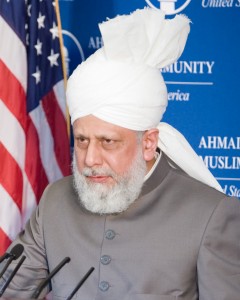By Ayesha Noor
On the Prophet Muhammad’s birthday Monday, thousands of Sunnis attacked an Ahmadiyya mosque in Dhulmial, Pakistan, setting fire to it and wounding several in the process before police dispersed the crowd and took over the mosque. Unfortunately, this kind of sectarian violence has happened before. On December 6, 1992, Hindu fanatics attacked the Babri mosque in Ayodhya, India. But while the Babri attack was soundly condemned, the Dhulmial attack has been praised.
Why?
In the early 1500s, Mughal Emperor Babar commissioned the construction of the Babri mosque. For over half a millennium, Muslims have prayed in this mosque. However, according to some accounts, some European historians in the 1800s claimed that the mosque was actually built on the birthplace of Rama, a Hindu deity, and that some pillars used in the mosque were taken from a destroyed Hindu temple. Years of tension between Hindus and Muslims eventually led to the destruction of the mosque December 6, 1992. Tens of thousands of Hindu nationalists had gathered for prayers. At noon, some broke past security and began to destroy the mosque’s domes. The crowd then attacked the mosque and demolished it.
After the news of the demolition broke, Pakistan fell into a deep state of mourning. Educational institutions and businesses were closed and religious leaders spewed their hatred indiscriminately against every Hindu and every Indian. While there were no riots in my home city of Rabwah, the news of the attack had a deep effect on all residents. Meanwhile in India, over 2,000 people lost their lives in nationwide riots.
Four hundred years after Babri mosque was constructed, Ahmadi Muslims built Dhulmial’s Ahmadiyya Mosque in 1929. Several of Dhulmial’s elders accepted Mirza Ghulam Ahmad of Qadian — who claimed he was the awaited Messiah and Mahdi and established the Ahmadiyya Muslim Community — as the promised Messiah during his lifetime. In 1927, the elders of Dhulmial planned to build a mosque similar to the famous “Minaret of the Messiah” in Qadian. They sent an architect to Qadian to understand the structure and design of the minaret and to build a replica in Dhulmial. Each member of the Ahmadiyya Jama’at Dhulmial donated one month’s worth of salary for the project. Builders volunteered to dig rocks from nearby hills to construct the mosque. With the architect’s attention to details, donations from community members and tireless efforts of contractors and laborers, a magnificent mosque with a 66-foot-tall minaret was erected. For over 80 years, Ahmadi Muslims have been worshipping at the mosque.
Just as Hindu fanatics deemed Babri mosque to be Hindu property, Muslim fanatics recently fabricated claims that the mosque was their property. In a letter to District Coordination Officer Chakwal, mullahs of the area made a baseless claim that the mosque was actually built in 1860 and “Qadianis” (pejorative for Ahmadi Muslims) illicitly commandeered the mosque.
Just as some Hindu fanatics signaled their fellow fanatics to demolish the mosque by climbing over Babri Mosque’s 200-foot dome, a Muslim fanatic climbed over the Dhulmial mosque’s 66-foot dome to signal to his fellow fanatics of their so-called victory.
One might rationalize that Hindus did not have a sentimental attachment to the Babri mosque itself, because it was a mosque. But the extremists attempting to destroy the Dhulmial mosque claim they are Muslims. Unlike the Babri riots, in which Muslims and Hindus fought in both India and Pakistan, Ahmadi Muslims refuse to respond violently and therefore will not riot or break laws. India’s Supreme Court ruled that the Babri mosque should be divided into three equal parts. But it remains uncertain what the fate of Dhulmial mosque — built with the blood, sweat, and tears of Ahmadi Muslims — will be.
One thing remains certain: Sunni clerics are praising the attack in Dhulmial because it is the only way to hide the truth of their own injustice against Ahmadi Muslims. While the Qur’an specifically commands Muslims to protect all houses of worship, these clerics claim they know better. So once again we mourn. Not just for a mosque that’s been destroyed, but also for a society that approves that destruction.
In the wake of Monday’s attack, there may not be any riots in the streets or businesses and homes being set on fire. But rest assured that the damage done from Muslims who celebrate destroying mosques has far more devastating consequences.
Ayesha Noor works as Faith Outreach Coordinator for the women’s auxiliary of the Ahmadiyya Muslim Community, Richmond. She holds a masters’ degree in international economics. She has been published in the New York Times, Washington Post and USA Today and is a staff writer for the Muslim Sunrise, oldest and longest-running Muslim American periodical. The article originally appeared in The Islamic Monthly.













